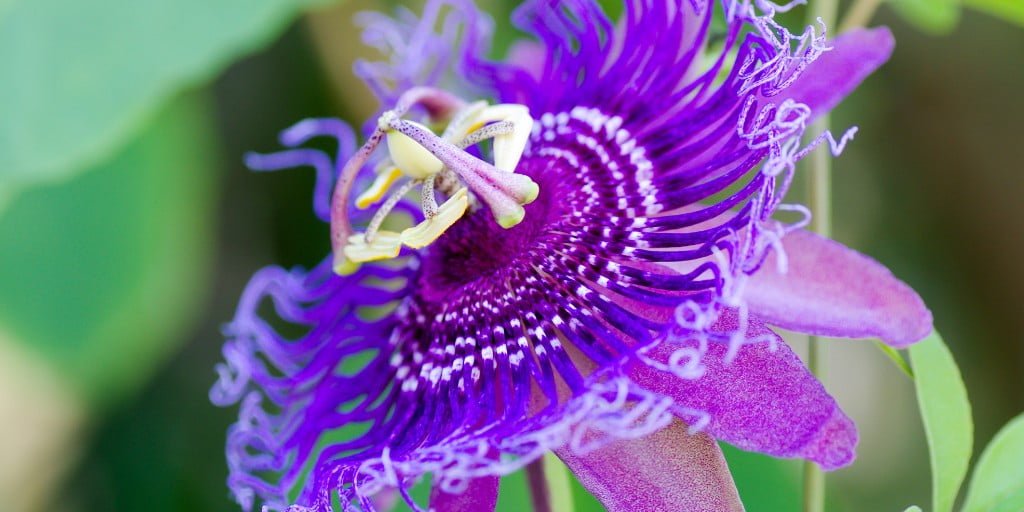Passiflora incarnata which is also known as passion flower. The flowers of these plants are purple or sometimes white and pink. This passiflora incarnata is generally found in the southeast United States. Passiflora incarnata has its fruit which is generally known as passion fruit. These fruits are sweet and delicious. Purple vine, purple passion flower, and passion flower are some of the common names. When you place your plant in a good environment and take a little care then it grows healthy and fast. It can sometimes overrun adjacent beds. This is an issue for gardeners who like a slow-growing garden. These passiflora incaranata are very easy to take care of. People who have busy life but want some plants in their homes. Then they can buy passiflora as they need very little attention.

How To Take Care Of Passiflora Incarnata
Sunlight And Temperature
Passiflora incarnata needs 6-8 hours of direct sunlight. On summer days try to put your plant in a cool shaded place so the sunlight doesn’t directly affect your plants.
Water And Humidity
After putting a lot of water in the soil, wait until the soil gets dry, and don’t add any more water. Water the soil a few times a week during dry weather to maintain moisture levels.
Try to maintain a proper schedule for watering the plants. It helps to grow your plant healthy and fresh. Putting in the right amount of water can give you healthy plants and fruits.
Soil
Plants benefit from using high-quality potting or gardening soil. Make sure that the soil is well-drained enough for the root masses. Deep roots are found in these vines. The plant grows over the winter and emerges in the early spring with the support of a thick layer of organic soil. These passion flowers need well-draining soil and clay soil. this will help passion flower to grow healthy and fast.

Fertilizers
These types of plants do not need any fertilizers. As they can grow by themselves. But if you want to have good fruits on them then you can put high phosphorus fertilizer. this will help in the development of the fruits.
Trim your plant
Depending on where you belong, you need to trim your plant in the early fall or right before spring begins. Trimming is necessary to promote the growth of the following year or to restore an older vine.
Passionflower distribution
Although passiflora seeds are difficult to develop. Cuttings and stacking are the simplest methods for supporting your passion flower vines. Removing the leaves from a woody stem and burying it in the ground forms a mound layer of vine. To secure it, set a stone or pin on top. It should take two to three weeks for the stem piece to root if you give it plenty of water.

Conclusion
Passiflora incarnata is a type of climbing plant best known as a passion flower. They appear to be exotic flowers and give you tasty fruits. These flowers especially grow in summer.
FAQ’S
By how much does Passiflora incarnata grow in size?
The passionflower, passiflora incarnata, popularly referred to as the Maypop, is the answer. Using tendrils instead of sticky pads like English ivy. the passionflower is a fast-growing vine that can reach a height of 10 feet in a year.
What are the circumstances in which Passiflora grows?
Grow Passiflora caerulea in full sun to light shade on wet but well-drained soil next to a protected wall. Passiflora caerulea is a self-clinging plant. Athough it needs an obelisk or trellis to support its ascent. In the spring and summer, Passiflora incarnata needs to be watered. Every two weeks, and in dry weather, it needs to be watered frequently.
Does passion flower grow difficult?
Any soil, whether acidic or alkaline, will support the growth of passion flowers as long as it drains well. Passion flowers grow vigorously up to 8–12 meters tall and require little to no upkeep. They can be grown in a container, but as they are a vigorous climber, it will need to be very large.
What causes passion flowers to die?
Depending on how old the vine is, the roots may grow up to two feet deep and fairly thick. The roots can be killed by spot-spraying Roundup on their tips.





